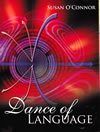Shakespeare Made Easy

 Shakespeare made easy is the dream of everyone who has been enrolled in school. Tradition crowns William Shakespeare the greatest writer in the history of the English language.
His plays, poems, and sonnets not only meet the highest standards of exemplary use of language;
Shakespeare’s words teach the reader the truth about human nature, a gift that sets him apart from all others because he does it best.
Renowned scholar G.B. Harrison explains it most eloquently in Shakespeare, His Major Plays and Sonnets.
Shakespeare is “the most universal of all because he is the wisest…he can understand and sympathize more than other men.
He can see the whole picture of humanity and recreate it so that men of every kind, country, creed, and generation understand” (3).
Shakespeare made easy is the dream of everyone who has been enrolled in school. Tradition crowns William Shakespeare the greatest writer in the history of the English language.
His plays, poems, and sonnets not only meet the highest standards of exemplary use of language;
Shakespeare’s words teach the reader the truth about human nature, a gift that sets him apart from all others because he does it best.
Renowned scholar G.B. Harrison explains it most eloquently in Shakespeare, His Major Plays and Sonnets.
Shakespeare is “the most universal of all because he is the wisest…he can understand and sympathize more than other men.
He can see the whole picture of humanity and recreate it so that men of every kind, country, creed, and generation understand” (3).
It is the universality of Shakespeare’s works that engenders Shakespeare made easy as you journey through the language. Even though the writing falls into the modern English period, the archaic meaning of words, the often inverted sentence order and meter, the figurative language, the clever word play, and rhetorical devices add charm and sophistication to the writing but can also be barriers to understanding Shakespeare’s writing. Yet these road blocks can be dismantled and the language decoded with a more structured and guided study of Shakespeare’s work. The rewards in the end justify any amount of effort expended to truly enjoy the story, the humor, and the unsurpassed passion of the world’s greatest writer.
Having said that, enjoying Shakespeare on the most basic levels—watching a really good film version of a play, dressing up in Elizabethan costumes, acting out a scene from a play, learning about and participating in the culture of Shakespeare’s day—is without doubt the best way to begin to understand the plays. Students who have developed a positive attitude toward what they’re learning are far more willing to manage the difficult components in good time.
At some time in your life you will most likely cross paths with the poet-playwright William Shakespeare. Maybe you started in middle school with the plays and worked your way up through the tragedies in high school and college. Maybe you survived that part of your education and you’re now interested in attending the popular Shakespeare festivals in summer outdoor theatres across the nation. It is not only possible to improve your experiences with the plays that often confuse listeners with unfamiliar language and sentence structure but also easier than you might imagine. Please don’t misunderstand: Authentic Shakespeare should not be dumbed down, and you wouldn’t want that unfortunate conclusion under any circumstance, but your understanding can be heightened through familiarity, breaking the components into manageable pieces that look familiar so that the whole of the play is recognizable. Oftentimes we comprehend something just by taking a bit of the mystery out of it.
Adapting the Ear to Shakespeare
Shakespeare made easy begins once you are familiar with the plot and you are ready to watch the play. Click on English subtitles to help your comprehension, but also listen closely so you can adapt to the sound of Shakespeare. The more you listen to a British accent speaking the archaic language of Shakespeare at a fairly rapid pace, the easier it becomes, although not all actors have a British accent. Everyone, even scholars, begins this way. The human ear must adapt, must become accustomed to this new sound so it can actually hear the words and not remain in a befuddled state of curiosity about what is being said.
Prose and Verse
The next level of listening involves the fact that Shakespeare’s plays are written in a combination of prose and verse. Prose consists of sentences that do not have meter (a beat) or rhyme. It’s the speech we use in our everyday lives to write letters, reports, essays, stories and novels, and to speak. Verse, or poetry, is comprised of groups of words, often in a form similar to sentence structure that is referred to as lines. It can contain rhyme and meter, but it can also be free verse that contains neither. Shakespeare, however, does not employ free verse.
Characters in the plays who are noble or virtuous or who speak of those qualities have been given lines of verse. Characters who are of a lower birth or status or who speak of earthy, bawdy, vile, or evil things, even trickery, do not get the privilege of speaking in verse. Until you become comfortable with Shakespeare’s language, however, don’t worry about who speaks in verse or prose. You can address that later if you wish to move to a more advanced level.
Rhetorical Devices
Shakespeare uses a number of rhetorical devices in his plays, and he repeats them often. This frequency can actually help the newcomer to understand his language by paying attention to this familiar repetition. For example, Shakespeare crushes words together into contractions, not only because that practice was common in his day but also because he can get rid of extra syllables in a line of verse. He was aiming for ten syllables per line, a structure that contributes to the meter or beat called iambic pentameter: ten syllables with alternating unstressed and stressed syllables. Words such as o’er (over), is’t (is it), ne’er (never), for't (for it), 'tis (it is), 'twill (it will) and so on subtract syllables from the lines so that they contain ten syllables of iambic pentameter.
From Thomas Wilson’s Arte of Rhetorique, Shakespeare borrowed three rhetorical devices which he uses repeatedly in the plays. The more you see or hear these tools of language, the more familiar the sound of Shakespeare’s lines will become. The more familiar the sound, the less work you will have to do to comprehend Shakespeare’s language.
Descriptio
The first rhetorical device, descriptio, employs a series of descriptive content words—nouns, verbs, adjectives, adverbs and also phrases with these words. It isn’t enough for Shakespeare to elaborate with one descriptive word; he uses three or more in a series. For example, in Act 1, scene. 5 of Twelfth Night, Olivia says,
She could have simply stated, “The way you look proclaims you are a gentleman,” but descriptio gives the lines more energy.
Act 2, scene 5:
Viola: We men may say more, swear more, but indeed
Act 3, scene 4:
Malvolio: …no dream of a scruple, no scruple of a scruple, no obstacle, no incredulous or unsafe circumstance…
Act 3, scene 4:
Fabian: He is indeed, sir, the most skillful, bloody, and fatal opposite…
Act 3, scene 4:
Viola: I hate ingratitude more in a man
An awareness of a device found frequently in the lines creates a kind of readiness for understanding the plays.
Line-for-Line Exchange
Line-for-line exchange, a second device, offers a convenient venue for banter, which theatre-goers of any age love. Shakespeare often builds in this opportunity for banter in the verse through shared lines, requiring quick responses. A favorite line-for-line exchange occurs in Act 2, scene 4.
Viola: But if she cannot love you, sir—
Orsino: I cannot be so answered.
Viola: Sooth, but you must…Must she not then be answered?
Orsino: …Make no compare
Viola: Ay, but I know.
Orsino: What dost thou know?
Viola: Too well what love women to men may owe…
This kind of banter is not restricted to verse. Even when Shakespeare slips into prose, it can be useful, as in the conversation Viola, disguised as Cesario, has with Olivia in Act I, scene 5:
Olivia: Now, sir, what is your text?
Viola: Most sweet lady—
Olivia: A comfortable doctrine, and must may be said of it. Where lies your text?
Viola: In Orsino’s bosom.
Olivia: In his bosom? In what chapter of his bosom?
This playful game between Viola and Olivia is the beginning of an impossible romance for Olivia, for little does she know that Viola is not the handsome Cesario, but the woman Viola.
Amplification
The third device, amplification, increases the volume of the emotion being displayed by a character. In Act 1, scene 1, Orsino pines for the love of Olivia in this monologue:
Orsino: If music be the food of love, play on.
He continues in this manner for fifteen lines. In Act 2, scene 4 he’s still languishing:
Orsino: There is no woman’s sides
Eleven lines into the speech, he cannot accept Olivia’s possible rejection of him, and the emotional level is at its height, until he meets her face to face in Act 5, scene 1, at which time he threatens death.
Orsino: Why should I not, had I the heart to do it,
The awareness of these repetitive devices in the plays can do wonders to make Shakespeare’s art more familiar to you, but another device called a stock device, or convention, can bring you even closer to the text.
Stock Devices, Also Known as Shakespearean Conventions
A stock device, or convention as it is sometimes called, is an idea in the plot that is repeated in many of the plays, both comedies and tragedies. Below is a list of those most often seen in the plays:
In Twelfth Night
 Shakespeare made easy means you are now ready for the Shakespeare Festival, no matter which one in whatever city is the nearest one. Sitting in the audience, waiting for the opening of the play,
you should feel more prepared to be entertained by the greatest writer who ever lived.
Isn’t it a relief to understand how you’re being entertained! All you need now is a blanket on a starlit night--a loaf of bread, a glass of wine, and your best friend sitting beside you on the grassy hill waiting for the show to begin.
Shakespeare made easy means you are now ready for the Shakespeare Festival, no matter which one in whatever city is the nearest one. Sitting in the audience, waiting for the opening of the play,
you should feel more prepared to be entertained by the greatest writer who ever lived.
Isn’t it a relief to understand how you’re being entertained! All you need now is a blanket on a starlit night--a loaf of bread, a glass of wine, and your best friend sitting beside you on the grassy hill waiting for the show to begin.
